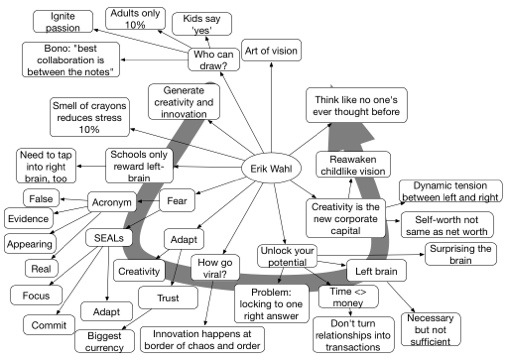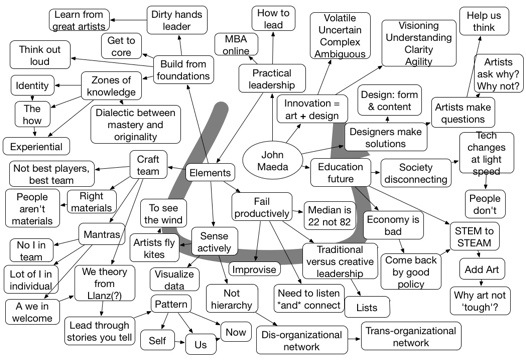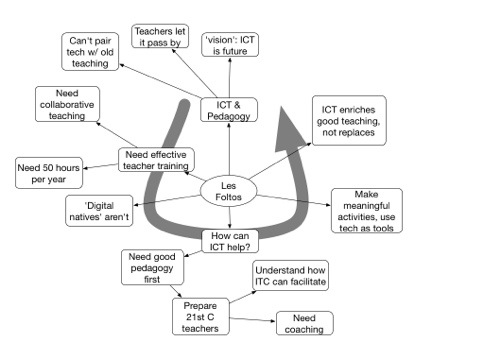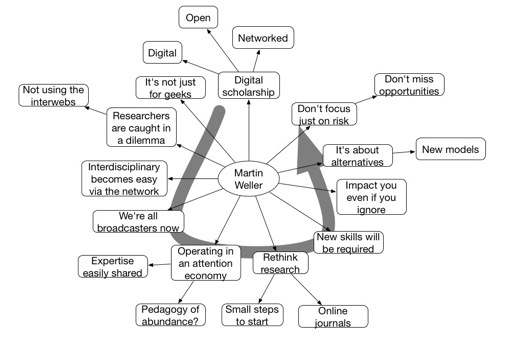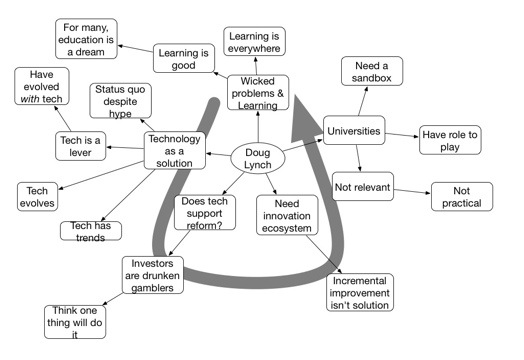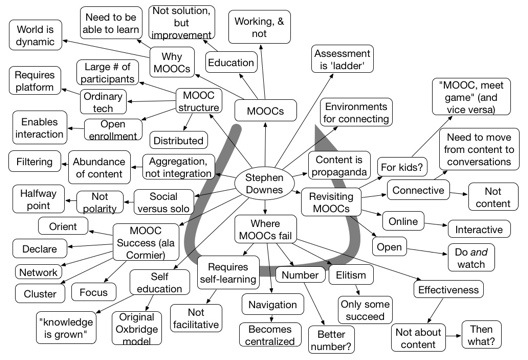Jane McGonigal spoke on games to change the world at the Stevenson School in Pebble Beach.
Archives for March 2012
Beyond Execution
 In a recent post, Harold Jarche talks eloquently about moving into the networked era, and practices of workscaping. He points to this insightful model by Jane Hart, showing the bigger picture supporting performance in the workplace, or what I like to call Big L learning.
In a recent post, Harold Jarche talks eloquently about moving into the networked era, and practices of workscaping. He points to this insightful model by Jane Hart, showing the bigger picture supporting performance in the workplace, or what I like to call Big L learning.
What occurs to me, however, is that there are two separate places you’ll get to. If you master formal learning and performance support (and while that’s the only thing many L&D groups do, there’re far fewer that do it well), you’re only going to support execution. While that used to be ok for a time when we could plan in advance, the increasing turbulence in markets – product cloning happening in weeks, information tsunamis, etc – means that even optimal execution alone isn’t going to be a differentiator.
What’s going to be needed is continual innovation, and that simply won’t, can’t, come from formal learning. It’s not even going to come from performance support, which while not full courses, is still designed. What you need to do to get continual innovation going is communication and collaboration. The myth of individual innovation is busted, and it’s talking together, and more importantly working together, that is going to lead to the new ideas, better processes, optimized systems, and more. Creativity, research, problem-solving are at the core, and those don’t come from formal learning.
You do need to have formal learning, don’t get me wrong, but that’s just the ante. The real game is going to come from tapping into the power of your people. You’ll have to create the right culture, get a shared vision, and empower your people with the resources to do the job. It includes the right mindset, skills, and tools. When things are aligned, you’re going to have the important outcomes: problems solved faster, shorter times to new product and service ideas, better customer relationships, and more.
You can figure it out on your own, but if you want to get there faster, you may want to get some help in accelerating your path to this new way of working, the sustainable path to success.
Scaling
A couple of weeks ago, I was in India for the #EDGEX2012 conference, an adjunct to an existing series of conferences that focus on improving educational opportunities in India. Speakers included George Siemens, Stephen Downes, Dave Cormier, Jay Cross, Gráinne Conole, Les Foltos, and Martin Weller, as well as a host of Indian experts.
They introduced us to the context the night before the conference, with a series of presentations indicating the scope of the issue. One fact kept recurring; the scope was trying to raise 350-500 million learners. That is, the 150 million discrepancy between those two is just a rounding error – we’re talking hundreds of millions of learners! Of course, this is in a country where power outages are common if you are lucky to have electricity at all, internet access can be dodgy at best, and smartphones are not ubiquitous.
Not surprisingly, the MOOC models that Siemens et al use, as well as the Stanford model, are of interest, seeing as how they are designed to be open to large numbers of learners. Downes reviewed the potential problems of their model of MOOCs in his presentation including the issues I had raised.
However, there are ways to address my concerns. Inge de Waard, in a MOOC presentation at the just completed Learning Solutions conference, indicated how she boosted success by supporting learning in such environments with some rubrics about how to deal with the information quantity, which addresses one of my concerns.
She also did have give them an (optional) activity, which I think is also important. This, I think, is the strong point of the Stanford model. I think a collaborative activity-focused, and well-facilitated discussion augmented MOOC could be a viable learning experience even for those not possessed of well-developed self-learning skills. I also think it could help develop those learning skills.
However, as one of the attendees asked me, how do you scale it? We are talking a lot of mentors. What occurred to me as a model was the notion of viral propagation. The way things go big fast is to spread to others who spread to others. It seems to me that a big opportunity is to not just train the trainer, but train the trainer’s trainer.
I would think that you could select some elite facilitators, and start a viral MOOC on discussion facilitation (noting the problem that such a topic needs a topic). Then those facilitators would be trained to develop other facilitators to develop other facilitators. Lots of other things would have to be put in place: jobs, for one, and some infrastructure, as at least some of these facilitators would need to be dispersed locally. But as de Waard noted, her course (on mobile learning) was able to be participated in via a wide mechanism of means, including cell phones.
And it seemed to many of us that the focus could be not just on meeting the job categories that are estimated to be needed, but also on employability and creativity, meta-learning as a layer on top. Others were concerned that learning to learn doesn’t mean much until you have a job (what’s more important, entrepreneurial spirit or a toilet?), but they don’t have to be mutually exclusive.
There are big challenges ahead for India, but as was pointed out, the country is in the midst of a shift in many ways, not least spirit. Many inspiring entrepreneurs showed amazing energy and ability, and while there was still extreme poverty on display, the opportunities are also immense. Here’s to lifting the human spirit, and the conditions for a better life for all.

